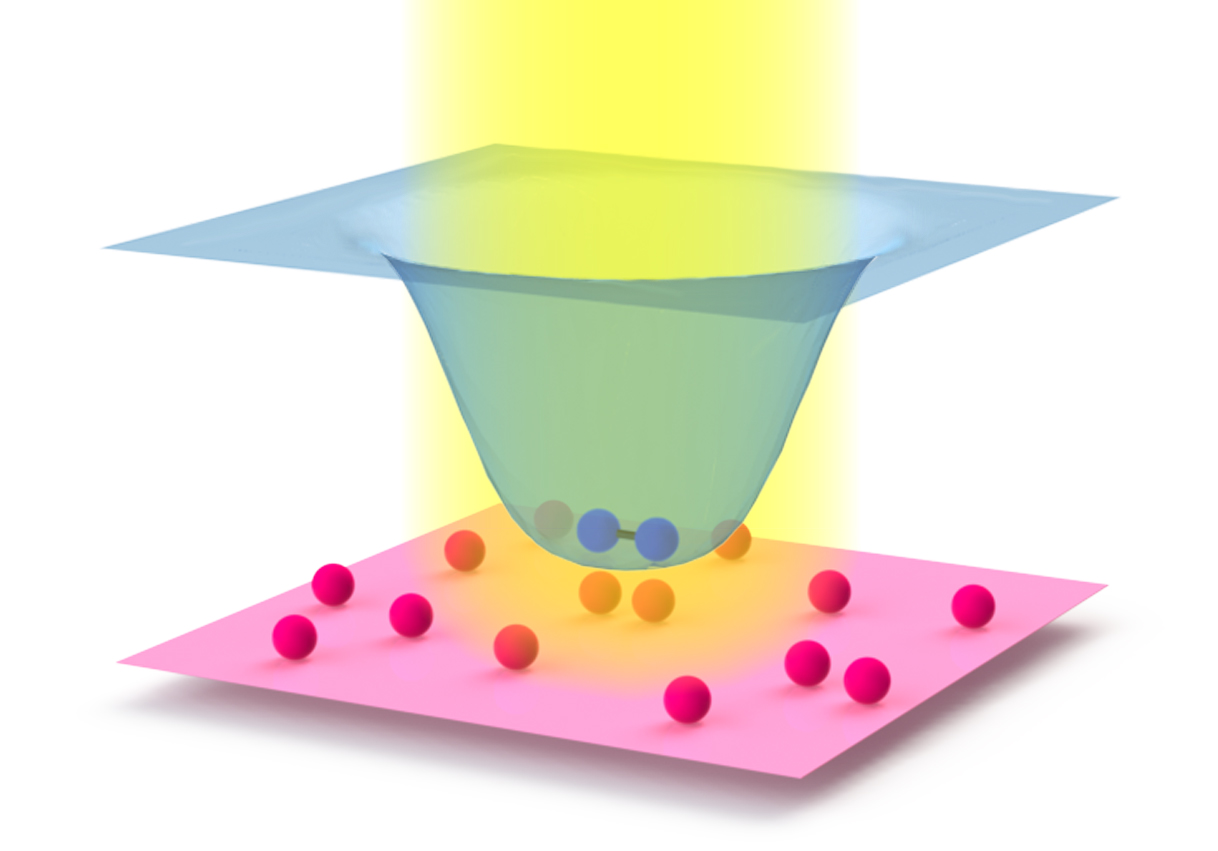Quantum dynamics with spatiotemporal control of interactions in a stable Bose-Einstein condensate
Laser makes atoms attract or repel each other in a long-lived Bose-Einstein condensate.
In an everyday game of billiards, the same thing happens every time one ball encounters another; as soon as the surfaces touch, the balls repel each other and bounce away. However, when the balls are replaced by single atoms with temperatures just billionths of a degree above absolute zero, we can choose to make the atoms attract or repel each other, or pass right through each other without colliding. We demonstrate experimentally that a laser can control ultra-cold collisions between cesium atoms in a stable Bose-Einstein condensate. The atoms exhibit fascinating behavior in this system. By exposing different parts of the sample to different laser intensities, we create games of quantum billiards with unusual rules, in which balls can attract or repel each other depending on where they encounter each other on the table. Alternatively, by oscillating their interactions, analogous to making the balls rapidly grow and shrink while they roll, we find the atoms stick to each other in pairs. This exquisite control over interactions in a many-body system has great potential for the simulation of exotic quantum phenomena and engineering of novel quantum devices.
Our paper on optical Feshbach resonance has been published on PRL and hit the Viewpoint on APS.
